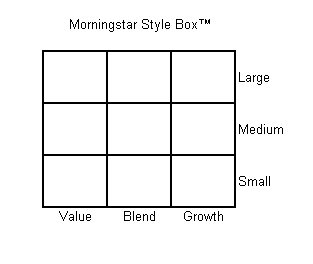

When deciding to build a diversified investment portfolio, there are many different considerations. Which asset classes do you buy? Large cap or small cap? US only, or International too? Mutual funds or ETFs? How much in bonds? Passive or active management? Growth or value?
Without a specific goal in mind and an investment philosophy to guide your decisions, it can quickly become overwhelming. There are two primary asset classes that form the core of an investment portfolio: Stocks and bonds. I find that many investors and advisers intuitively understand and accept the economic logic that longer term bonds have higher expected returns than shorter term bonds, corporate bonds have higher expected returns than government bonds, and stocks have higher expected returns than bonds. This is rational compensation for risk in an efficient market.
If I've already given you brain damage, think about it like this: If a 5 year US Treasury note issued and guaranteed by the federal government was yielding the same return if held to maturity as a 5 year bond issued by a corporation in significant financial distress, which one would you buy? Of course you'd buy the Treasury, as the corporate bond offers no compensation for risk, and a bond is nothing more than a promise to pay you back.
WE RECOMMEND THE VIDEO: Binary Options Trading – $10,000 Demo Account - #DERIV #forex
Get a free $10000 demo account to try the world's most advanced #binaryoptions trading platform. Open demo account: ...
When the conversation shifts to expected returns on stocks, there is often more debate. Originally, the thought was that differences in returns among stock portfolios could be explained by market beta. In other words, how much equity like risk a diversified stock portfolio or fund has. A portfolio with a market beta of greater than 1 has more equity type risk than the overall market, and vice versa. Therefore stocks with higher betas were thought to have higher expected returns than the market, explained by the greater risk, but applying this model to empirical data showed that market beta only explained about two-thirds of the differences in stock returns.
Eugene Fama and Ken French added to the research in the early 1990's, finding that by adding a stock's size (market cap: small vs. large) and relative price (book value vs. price: value vs. growth) to the equation, more than 90% of the differences in performance among stock portfolios could be explained. The Fama and French model is referred to as the 3 factor model, concluding that there is a difference in expected returns among portfolios that can be explained by their average size, relative price, and market beta characteristics. Smaller stocks with lower relative prices (referred to as value stocks) have unique risks associated with them unrelated to market beta, and this additional risk explains their higher historical returns and implies higher expected returns in the future.

For perspective, since the 1920's, small cap value stocks (measured by the Dimensional small cap value index) have had returns approximately 4% per year higher than the total market (measured as the S&P 500). With the higher risks in mind associated with small cap value stocks, it's rational to believe these higher returns exist as compensation for risk in a similar way that differences in term (time until maturity) and credit (ability to pay) characteristics explain the difference in returns among bonds. The small and value premiums have also been persistent and pervasive across both international and emerging markets, further supporting the Fama/French findings.
Armed with this information, an investor can potentially construct a more efficient portfolio. One that has comparable expected returns as the total market, but with less risk. The 4% higher historical return for small value stocks would have allowed an investor to achieve the same return as the total market with just 40% in small value stocks, and the remaining 60% in the safety and stability of 5 year US treasuries. The net result would have been an almost 40% reduction in portfolio volatility relative to a market portfolio.
My experience as a financial adviser for more than a decade has taught me that limiting the risk of large losses increases the odds that investors will be able to maintain discipline during bear markets.
Investors interested in more on this topic can contact me at jblom@lorintine.com. I also recommend the writings and books of Larry Swedroe, especially his most recent book, "reducing the risk of black swans", which is an easy read and can be purchased for under $10 on Amazon.
Jesse Blom is a licensed investment advisor and Vice President of Lorintine Capital, LP . He provides investment advice to clients all over the United States and around the world. Jesse has been in financial services since 2008 and is a CERTIFIED FINANCIAL PLANNER™ . Working with a CFP® professional represents the highest standard of financial planning advice. Jesse has a Bachelor of Science in Finance from Oral Roberts University. Jesse is managing the LC Diversified portfolio and forum, the LC Diversified Fund, as well as contributes to the Steady Condors newsletter.
What Is SteadyOptions?
Full Trading Plan
Complete Portfolio Approach
Diversified Options Strategies
Exclusive Community Forum
Steady And Consistent Gains
High Quality Education
Risk Management, Portfolio Size
Performance based on real fills
Non-directional Options Strategies
10-15 trade Ideas Per Month
Targets 5-7% Monthly Net Return
Recent Articles
Articles
Pricing Models and Volatility Problems
Most traders are aware of the volatility-related problem with the best-known option pricing model, Black-Scholes. The assumption under this model is that volatility remains constant over the entire remaining life of the option.
By Michael C. Thomsett, August 16

- Added byMichael C. Thomsett
- August 16
Option Arbitrage Risks
Options traders dealing in arbitrage might not appreciate the forms of risk they face. The typical arbitrage position is found in synthetic long or short stock. In these positions, the combined options act exactly like the underlying. This creates the arbitrage.
By Michael C. Thomsett, August 7

- Added byMichael C. Thomsett
- August 7
Why Haven't You Started Investing Yet?
You are probably aware that investment opportunities are great for building wealth. Whether you opt for stocks and shares, precious metals, forex trading, or something else besides, you could afford yourself financial freedom. But if you haven't dipped your toes into the world of investing yet, we have to ask ourselves why.
By Kim, August 7

- Added byKim
- August 7
Historical Drawdowns for Global Equity Portfolios
Globally diversified equity portfolios typically hold thousands of stocks across dozens of countries. This degree of diversification minimizes the risk of a single company, country, or sector. Because of this diversification, investors should be cautious about confusing temporary declines with permanent loss of capital like with single stocks.
By Jesse, August 6

- Added byJesse
- August 6
Types of Volatility
Are most options traders aware of five different types of volatility? Probably not. Most only deal with two types, historical and implied. All five types (historical, implied, future, forecast and seasonal), deserve some explanation and study.
By Michael C. Thomsett, August 1

- Added byMichael C. Thomsett
- August 1
The Performance Gap Between Large Growth and Small Value Stocks
Academic research suggests there are differences in expected returns among stocks over the long-term. Small companies with low fundamental valuations (Small Cap Value) have higher expected returns than big companies with high valuations (Large Cap Growth).
By Jesse, July 21

- Added byJesse
- July 21
How New Traders Can Use Trade Psychology To Succeed
People have been trying to figure out just what makes humans tick for hundreds of years. In some respects, we’ve come a long way, in others, we’ve barely scratched the surface. Like it or not, many industries take advantage of this knowledge to influence our behaviour and buying patterns.

- Added byKim
- July 21
A Reliable Reversal Signal
Options traders struggle constantly with the quest for reliable reversal signals. Finding these lets you time your entry and exit expertly, if you only know how to interpret the signs and pay attention to the trendlines. One such signal is a combination of modified Bollinger Bands and a crossover signal.
By Michael C. Thomsett, July 20

- Added byMichael C. Thomsett
- July 20
Premium at Risk
Should options traders consider “premium at risk” when entering strategies? Most traders focus on calculated maximum profit or loss and breakeven price levels. But inefficiencies in option behavior, especially when close to expiration, make these basic calculations limited in value, and at times misleading.
By Michael C. Thomsett, July 13

- Added byMichael C. Thomsett
- July 13
Diversified Leveraged Anchor Performance
In our continued efforts to improve the Anchor strategy, in April of this year we began tracking a Diversified Leveraged Anchor strategy, under the theory that, over time, a diversified portfolio performs better than an undiversified portfolio in numerous metrics. Not only does overall performance tend to increase, but volatility and drawdowns tend to decrease: